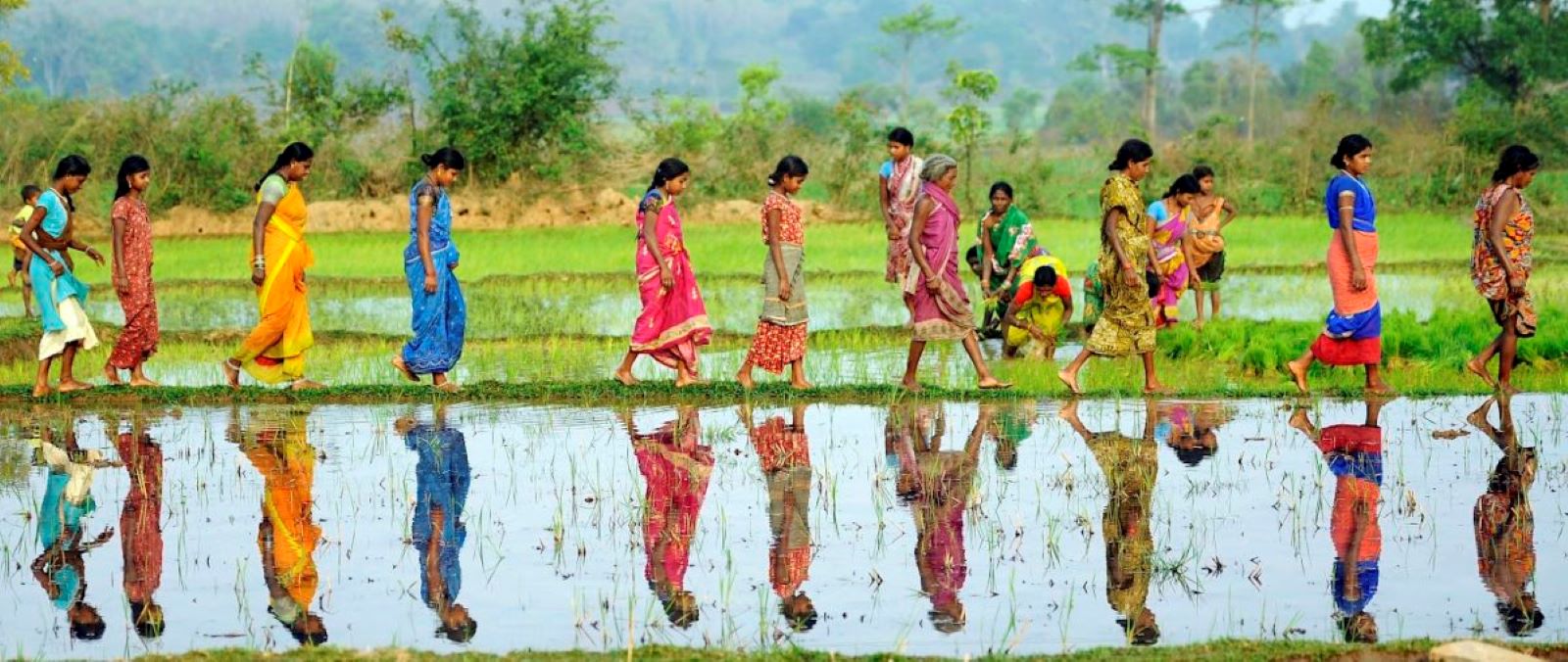Agricultural Credit, Insurance and Over-Indebtedness Among Smallholder Farmers

Women Walking Across Rice Paddy in India | Photo credit: Justin Kernoghan via Flickr
Context
For farmers in India, the availability of agricultural credit has long been a constraint to transformative agricultural investments, especially for marginal and smallholder farmers without documentation of land ownership. These farmers often fall out of the ambit of the formal financial infrastructure, and in many cases turn to informal sources of credit, accumulating high levels of debt while lacking consumer protections from the regulations that govern formal credit.
Digital technologies and innovative, inclusive approaches to credit-scoring and loan monitoring have the potential to circumvent existing credit constraints, increasing access to formal credit. However, they may also lower the barriers to entry for both unscrupulous lenders and risky borrowers, meaning they may have the perverse effect of increasing farmers’ debt levels, particularly when extreme weather events damage crops and reduce agricultural incomes. To counteract this challenge, digital credit programs could bundle loans with crop insurance to protect against damage from natural hazards, effectively reducing farmers’ debt levels when weather shocks damage crops. This could de-risk the use of credit for productive investments, enhancing farmers’ ability to repay loans while reducing over-indebtedness.
Study Design
This project will evaluate the impacts of digital credit, offered either in isolation or bundled with agricultural insurance, targeted to small and marginal farmers in the states of Maharashtra and Odisha. Credit will be offered based on Dvara E-Registry’s KhetScore methodology and features a new agricultural credit product, for which farmers can apply using georeferenced crop images in lieu of land records to verify access to land. A second group of farmers will be given the choice to also add insurance coverage, which may lead to lower levels of default and indebtedness while allowing these farmers to invest more in agricultural activities, leading to higher incomes.
The study will randomize 120 villages (60 in both Maharashtra and Odisha) into one of three arms, each consisting of 40 villages:
Treatment A: Dvara E-Registry will offer KhetScore loans but no agricultural insurance
Treatment B: Dvara E-Registry offers KhetScore loans in combination with agricultural insurance
Control group: DER will not offer farmers any loans or agricultural insurance
The products will be offered during Rabi (dry season) 2022-23 and Kharif (summer monsoon season) 2023. Within each village, researchers will sample roughly 20 farming households interested in DER products, for a total of roughly 2,280 study participants across the 120 villages. This will enable researchers to test whether credit utilization is comparatively higher among farmers with access to loans based on KhetScore credit scores, and whether farmers with bundled credit-insurance products experience comparatively lower levels of default and indebtedness. In addition, researchers will examine whether the impacts vary by gender, as previous research has shown the implementing partner’s novel credit-scoring model is less discriminatory towards women and landless households compared to standard methods of issuing credit for smallholder farmers.
Results and Policy Lessons
This project is ongoing, results are forthcoming.

